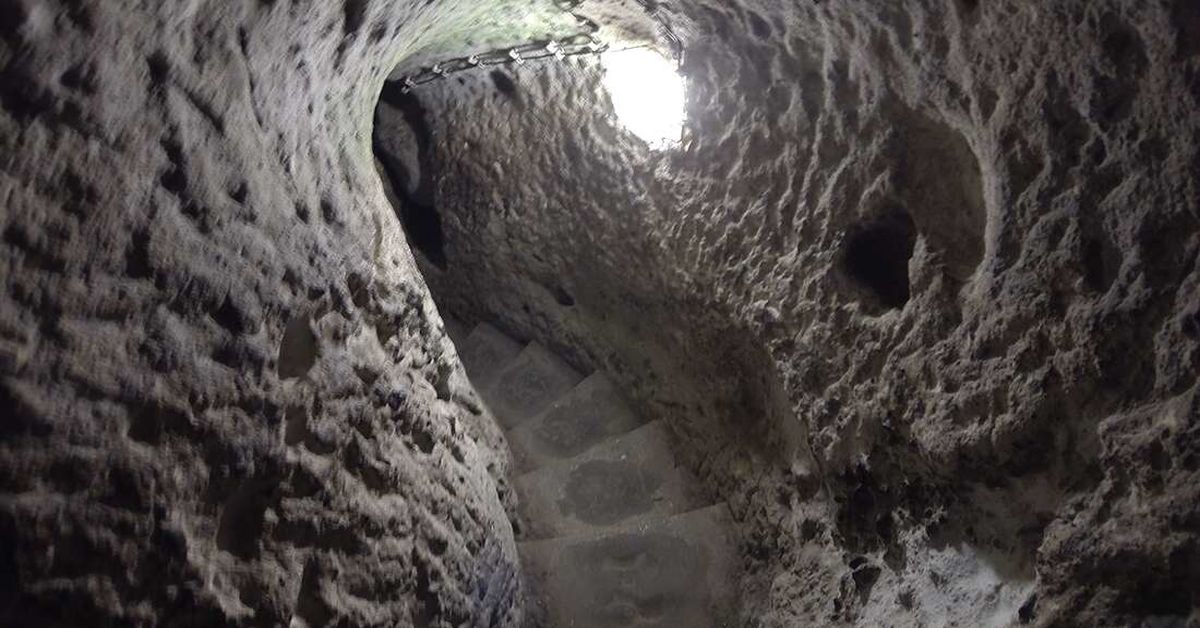When a man knocked down a wall in his basement in the Nevşehir Province of Turkey, he ended up discovering an enormous underground city.

In 1963, a man (not named in reports from the time) in the Nevşehir Province of Turkey sledgehammered a wall in his basement and found a tunnel behind it. And the tunnel connected to more tunnels. When archaeologists later arrived to the site, they revealed an entire underground city which was up to 18 stories deep and had everything needed for underground life, including schools, chapels, and even stables.
Located in Cappadocia, Turkey, the underground city of Derinkuyu has been abandoned for a long time, even though it may have hold up to 20,000 people in the past. Work on the city may have begun as far back as the 8th–7th centuries BCE, according to archaeologists at the Turkish Department of Culture.

It was the Phrygians, an ancient Indo-European speaking people inhabiting central-western Anatolia in antiquity, who began to carve out the rock formed by volcanic ash deposits. They didn’t get too far with it though, despite the material being soft. We know this from a manuscript dating to about 370 BCE, which most probably describes the ancient underground city of Derinkuyu and deems the dwellings there just about big enough for a family, domestic animals, and food.
The historical region of Cappadocia, where Derinkuyu is situated, contains several historical underground cities, carved out of a unique geological formation.

Derinkuyu reached its peak in the Byzantine period (about 395 CE to 1453 CE). It was then that the place was made into a labyrinth of tunnels, chambers, stairs, passageways and rooms, covering 445 kilometers² (172 miles²) altogether. The vast network thus created contains concealed entrances, wells and water channels – and even ventilation shafts to provide residents with enough oxygen.

The people living in the area most probably used the easily-carvable soft rock for storage purposes first, allowing them to keep food at desirable temperatures. Later, they realized it was also excellent for defense purposes and thus started to create the underground maze.
One such defense mechanism allowed those living on the bottom levels to cut off the water supply to the upper and ground levels, effectively preventing enemies from poisoning water. Also, there were round rolling stone doors to block the tunnels of the underground city from the inside, while the size of the passageways only allowed one potential invader to line up at a time – a very effective defense mechanism.
The underground spaces were used for all kinds of other purposes, too. For example, there was room for a wine press, domestic animals, a convent, and even small churches – the most famous one being the cruciform church on the seventh level.
But some shafts went even much deeper, doubling as wells. Even before Derinkuyu was discovered, locals used these to get their water, unaware of the hidden world lying behind. In fact, derin kuyu means ‘deep well’ in Turkish.

The place made an excellent shelter and was used as such for many centuries by different people, from early Christians fleeing persecutions from the Romans, to Muslims who used it for protection during the Arab-Byzantine wars of 780 and 1180. Similar caves were used for such purposes until the early 1900’s.
“When the news came of the recent massacres at Adana, a great part of the population at Axo took refuge in these underground chambers, and for some nights did not venture to sleep above ground,” to cite one example by Cambridge linguist Richard MacGillivray Dawkins.

“It appears […] that until recently the people lived entirely in these subterranean dwellings, without any houses above ground.”
Sources: 1, 2, 3
